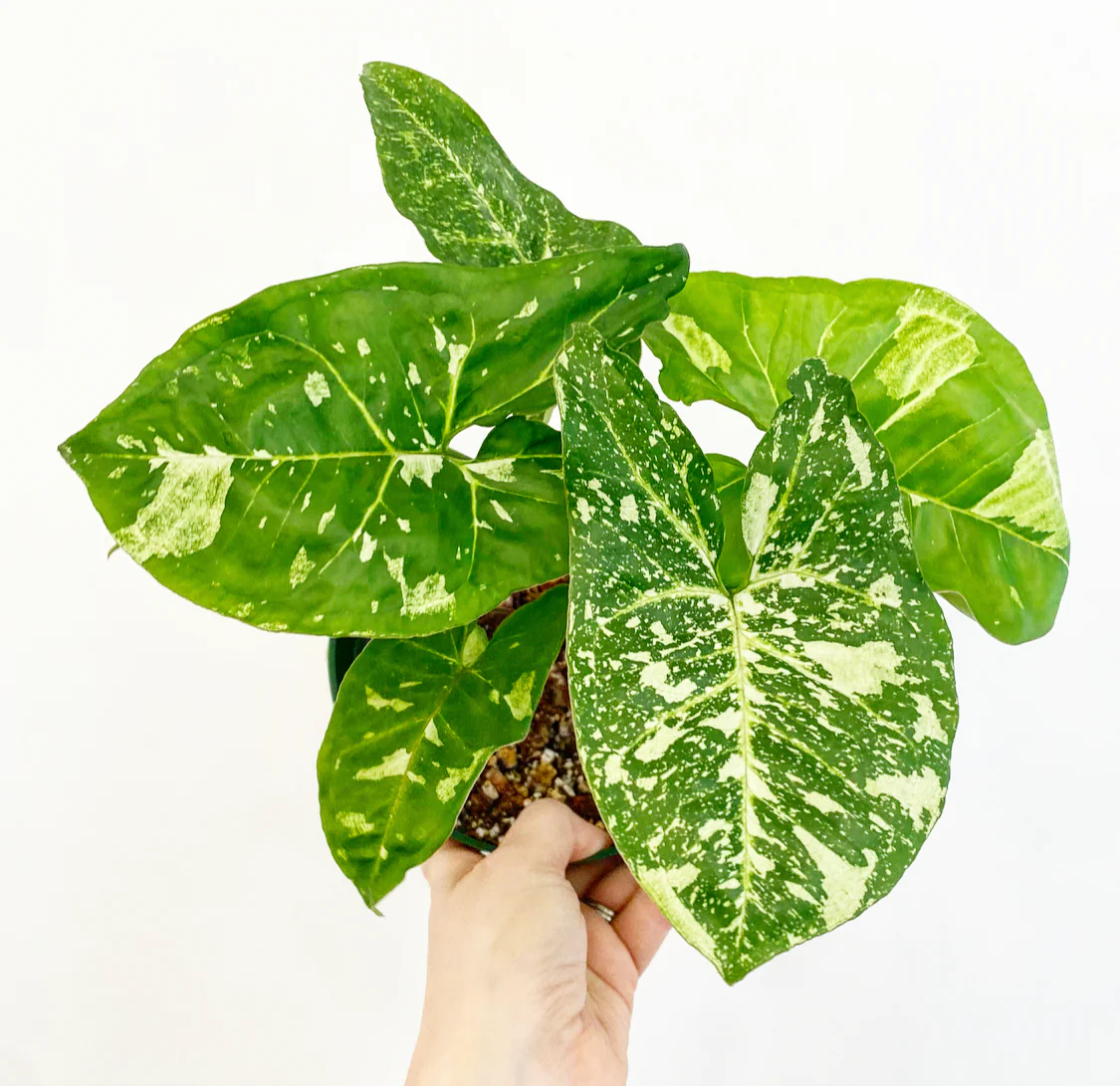Syngonium Panda: A Beautiful Tropical Houseplant | Plant Care Guide
Introduction to Syngonium Panda
The world of indoor plants is teeming with diverse species, each fascinating in its own way. Today, we take a close look at one specific plant that has gained a lot of attention for its unique beauty and ease of care - the Syngonium Panda.

The Origin of Syngonium Panda
Why is it called Panda?
The Syngonium Panda owes its name to its distinctive variegated leaves that bear an uncanny resemblance to the monochrome beauty of a panda's face. This intriguing plant is a part of the large Araceae family, and it originates from tropical rain forests of Central and South America.
Characteristics of Syngonium Panda
Visual Appearance
The Syngonium Panda is a captivating specimen. Its leaves, which carry a luscious dark green color, are scattered with bold white sections. This stark contrast mirrors the black and white of a panda, hence the name.
Growth Habit and Size
A healthy Syngonium Panda can grow up to 2-3 feet indoors. It has a natural vining habit, but it can also be grown as a bushy tabletop plant with regular pruning.
Leaf Structure and Color
The leaves of the Syngonium Panda are arrowhead-shaped or sagittate. The combination of its deeply green color and the stark white patches gives it a uniquely attractive appearance.

"Click now to bring the elegance of the Syngonium Panda into your home – a touch of nature that redefines your living space. Shop today for this exquisite plant!"
Caring for Syngonium Panda
Ideal Light Conditions
Syngonium Panda thrives in bright, indirect light. Too much direct sunlight can cause the variegation to fade, while too little light can slow down its growth.
Watering Needs
This plant prefers a moist soil environment, but not soggy. Allow the top inch of the soil to dry out between waterings to prevent root rot.
Temperature and Humidity Preferences
Syngonium Panda is tropical at heart, loving warm temperatures and high humidity. Try to maintain indoor temperatures above 60°F and ensure a relative humidity of 60-80% for optimal growth.
Soil Requirements
A well-draining potting mix is ideal for this plant. Consider a peat-based mix with perlite or sand to improve drainage.
"For more comprehensive care instructions and tips to keep your Syngonium Panda thriving, explore our detailed guide on Syngonium Care."
Propagation
Syngonium Panda can be propagated from stem cuttings placed in water or directly into moist soil. "Learn how to easily propagate your Syngonium Panda through our step-by-step propagation guide in Syngonium Propagation: Easy Steps to Multiply Your Syngonium."
Benefits of Having a Syngonium Panda in Your Space
Air Purification Properties
Like many indoor plants, the Syngonium Panda contributes to purifying indoor air, absorbing harmful toxins and releasing fresh oxygen.
Enhancing Home Aesthetics
With its striking leaves, the Syngonium Panda adds a dash of tropical allure to any room, enhancing the overall aesthetics of your living space.
"Discover the full range of benefits of having a Syngonium Panda in your home by reading our article on Syngonium Benefits: 5 Key Benefits of Growing Syngonium."
Common Issues and Troubleshooting
Yellowing Leaves
Overwatering or poor drainage can cause yellowing leaves. If you spot this, reassess your watering schedule and soil conditions.
Stunted Growth
Stunted growth could be a sign of insufficient light or nutrients. Consider moving your plant to a brighter spot and using a balanced plant fertilizer.
Conclusion
The Syngonium Panda is more than just a pretty face. It is an easy-to-care-for plant with aesthetic and health benefits, making it a wonderful addition to any indoor plant collection.

Frequently Asked Questions
1. Is Syngonium Panda toxic to pets?
Yes, like many houseplants, Syngonium Panda is toxic if ingested, so keep it out of reach from pets and children.
2. How often should I fertilize my Syngonium Panda?
Fertilize once a month during the growing season with a balanced houseplant fertilizer.
3. Can Syngonium Panda grow in low light?
While it can tolerate low light, the growth and variegation will be best in bright, indirect light.
4. How often does Syngonium Panda need to be repotted?
Generally, repotting every 2 years is sufficient for this plant.
5. What are common pests for Syngonium Panda?
Mealybugs and spider mites can sometimes be a problem. Regularly check your plant for signs of these pests.
https://bit.ly/4b5ojp6
Nhận xét
Đăng nhận xét